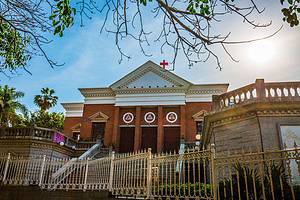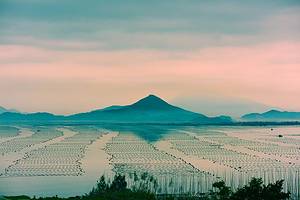Yunshuiyao + Tianluokeng + Gaobei Tulou 2-Day Tour
2 cities |
9 attraction(s) |
total distance 34
km
 TIPS
TIPS
Day1
Day2
Day1: Zhangzhou
5 attraction(s) ·
28 km
1
Original name Changjiao Village, a historically ancient village with ancient paths, century-old banyan trees, mystical earth buildings, and picturesque mountains and waters.
21
km
2
Fujian's classic Tulou architecture features four circular buildings surrounded by one square building, jokingly referred to as "four dishes and one soup." Famous Chinese architect described it in a poem, saying: "Viewed from above, it resembles a blooming flower; viewed from the side, it resembles Potala Palace."
4
km
3
If the Leaning Tower of Pisa amazes you, then the tilting Yuchanglou will surely attract you. From the outside, Yuchanglou doesn't seem much different from other tulou buildings, except that it is larger in scale. However, when you enter through the gate, you will find that its pillars are tilted - the third floor leans to the right, while the fourth floor leans to the left. You might want to scream and run away, but don't worry, it has stood here steadily for over 600 years. These tilted pillars, which have remained standing for centuries, not only bring visual shock to Yuchanglou, but also serve as evidence of its status as the oldest remaining tulou in Nanjing. However, the residents of Yuchanglou have not avoided the fate of turning their kitchens on the first floor into shops and stalls, selling homemade tea, snacks, and more. However, some kind and hospitable owners will offer visitors free tea tasting.
4
km
4
Ta Xiavillage, built along the creek, is known for its beautiful scenery. Whether it is the small blue brick buildings, the stone arch bridge crossing the creek, or the cobblestone paths in front of the houses, you can feel the charm of this typical Hakka village. The shape of the earthen buildings in the village is very diverse, including not only the common round and square ones, but also apron-shaped and ruler-shaped ones. What's even more unique is that there are two round earthen buildings at the bend of the meandering creek. If you spend 15 minutes climbing to the observation deck on the top of the hill, you will be able to see the panoramic view of the "Tai Chi" water village.
1
km
5
Deyuan Hall is located in Tiaxia village, Shuyang town, Nanjing County, Zhangzhou City, Fujian Province. Tiaxia village is a typical Hakka village in China. There are two winding mountains here, stretching from south to north, embracing a vibrant gorge. The ancient trees in the mountains tower into the sky, lush in green. The bamboo forest is dense, reaching up to the sky. In the deep shade of the forest, a sense of tranquility floats in the air. The faint mist draws a few curved lines, highlighting the undulating eaves of the village, like a mirage. A winding creek runs through the gorge, flowing swiftly and the water is clear and blue. The pure and refreshing air evokes memories of bygone eras, tracing the footprints of history.
Day2: Longyan
4 attraction(s) ·
7 km
1
It is a 5A-level scenic spot, a world cultural heritage, and also known as "a unique gem of Chinese ancient architecture".
6
km
2
In 1986, the Chinese Ministry of Posts and Telecommunications issued a set of "Chinese Residences" stamps, and the famous Chengqi Building became well-known through these stamps. Chengqi Building claims to be the king of Fujian Tulou, with four floors, four circles, and four hundred rooms up and down; it has gone through three hundred years of vicissitudes of life.
1
km
3
The Qiaofu Building is known as the "Doctor's Building". Eleven doctors have graduated from there, including a female medical doctor. The landlord, who is 83 years old, always gets up to greet visitors and say hello. The building has a combination of Chinese and Western styles and a central corridor.
1
km
4
Seze Tower is a square tower. The ground at the entrance is paved with cobblestone, forming a model of ancient coins, symbolizing the meaning of attracting wealth. Inside the tower, there is one gate, two wells, three halls, and four staircases. The design is reasonable and fully reflects the characteristics of family living together.



























